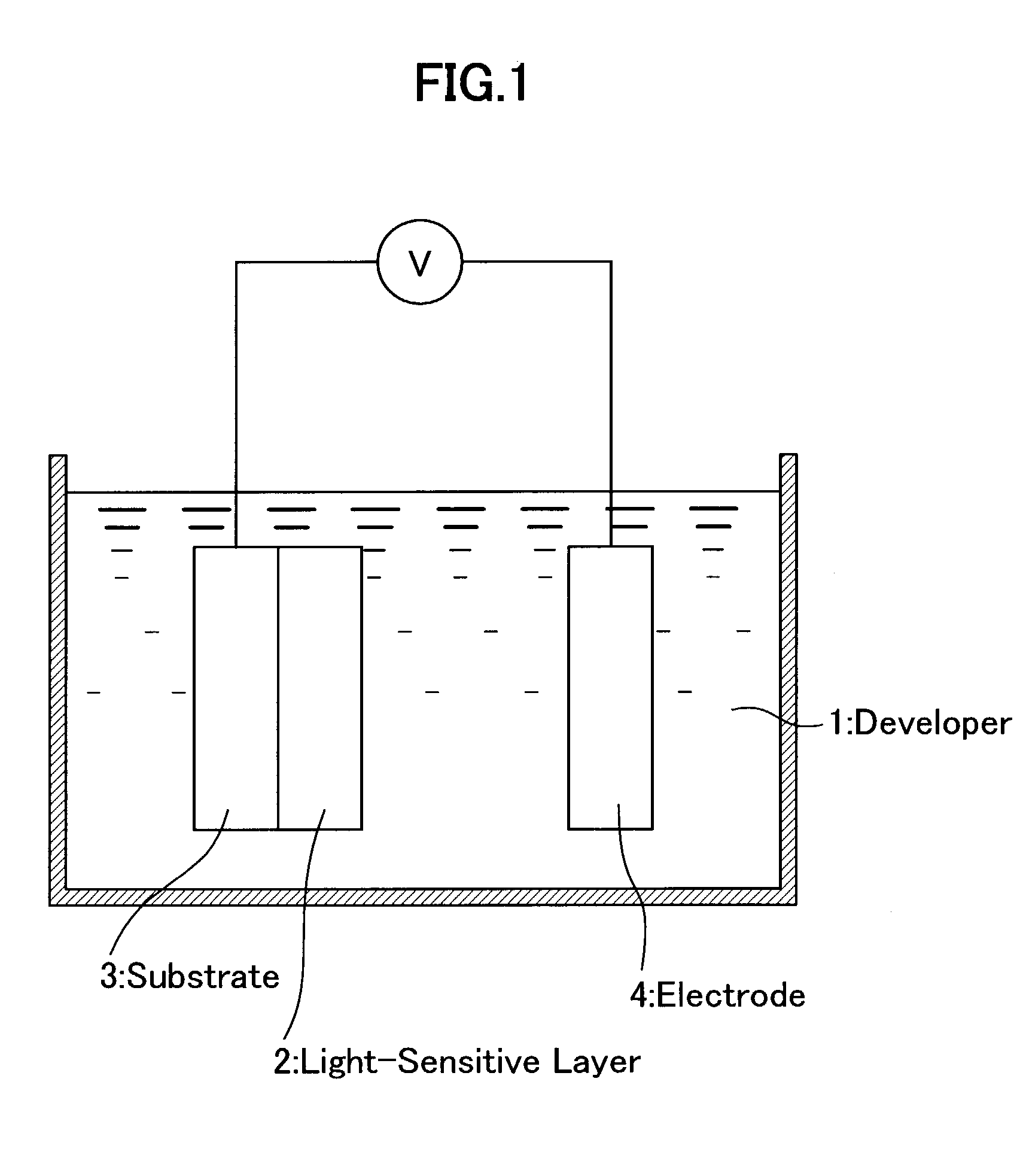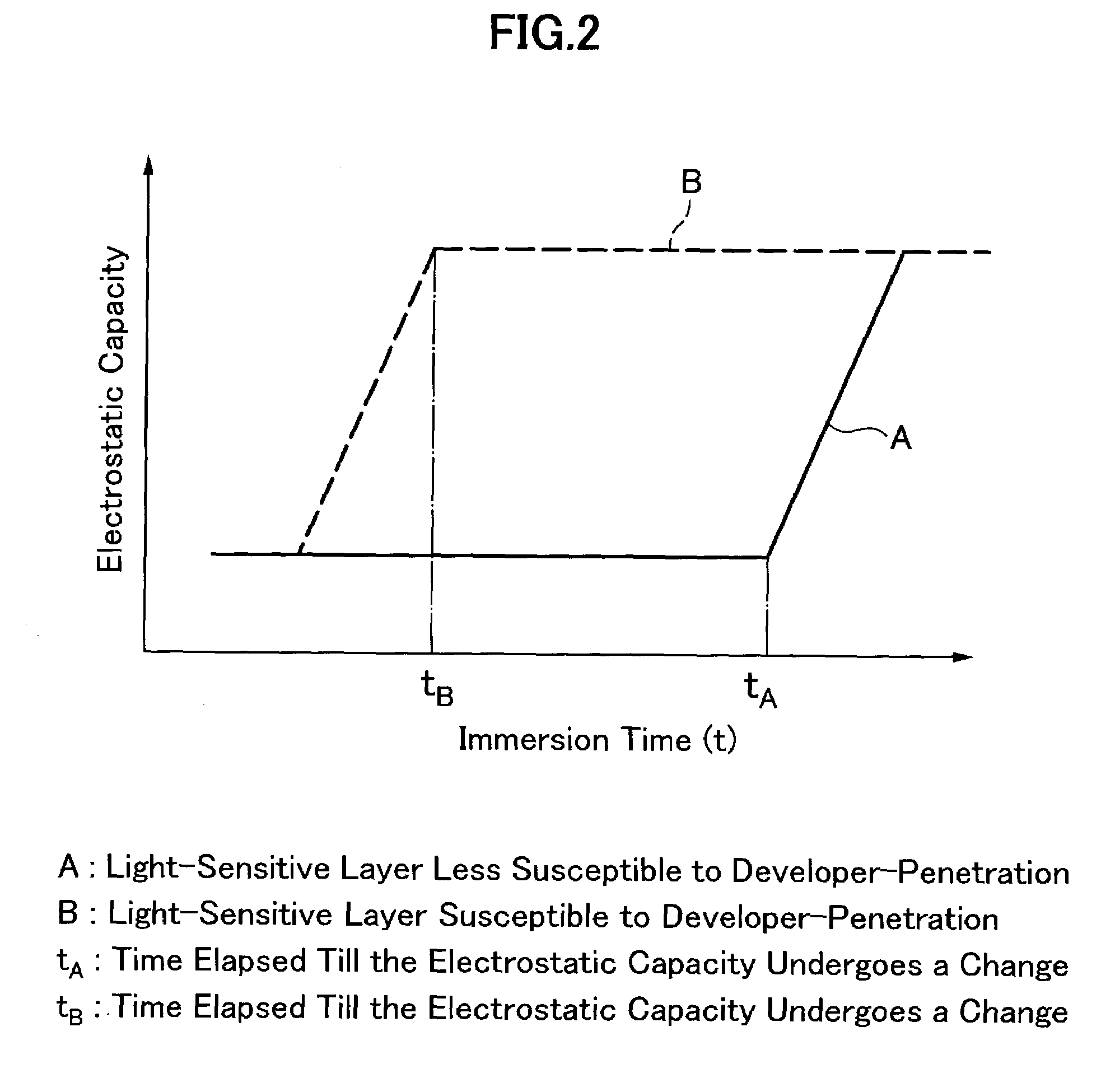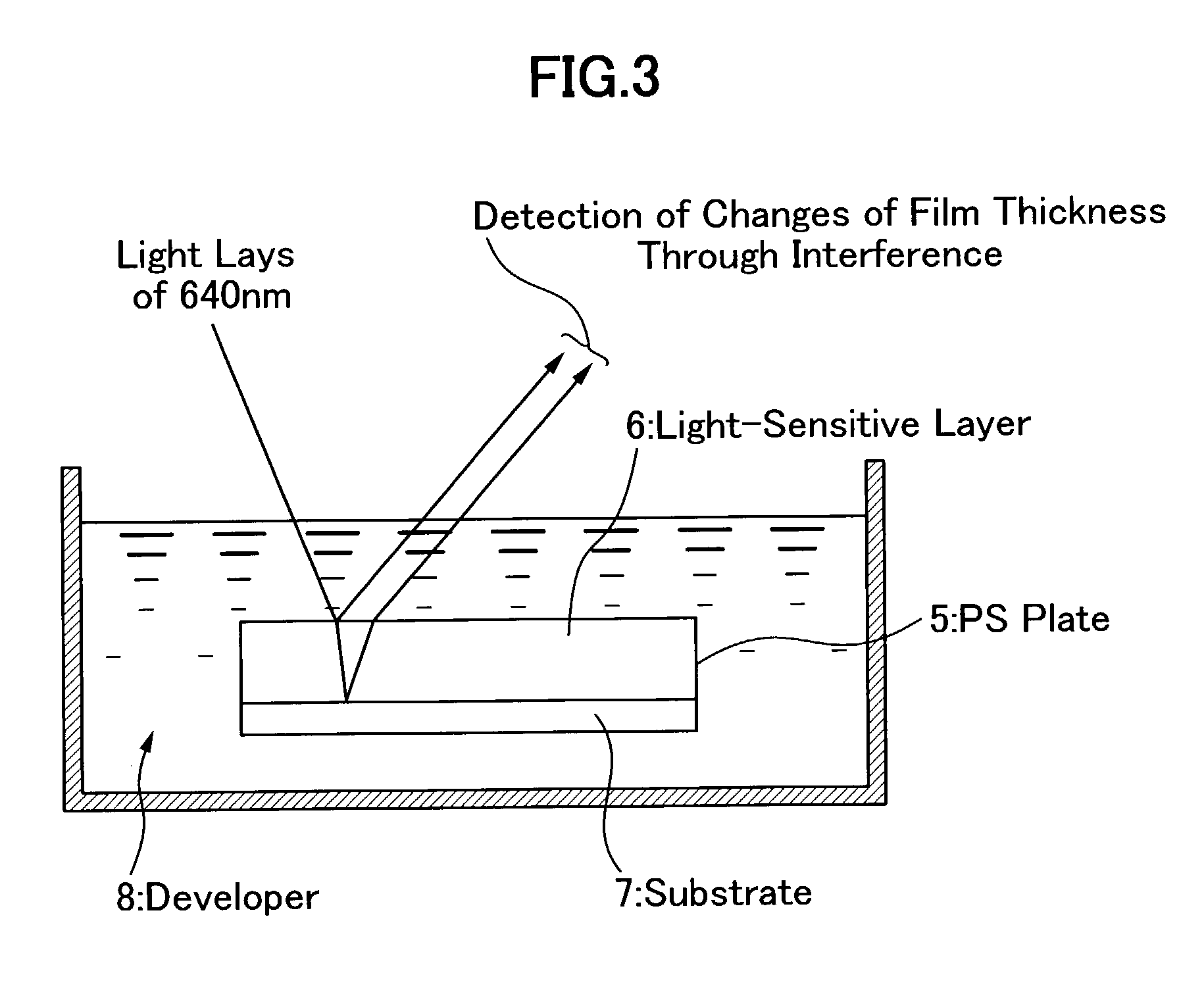Photopolymerizable presensitized plate for use in making lithographic printing plate and method for making lithographic printing plate
a lithographic printing plate and presensitization plate technology, applied in the field of photopolymerizable presensitization plate for use in making lithographic printing plate, can solve the problems of significant deterioration of the printing durability of the resulting lithographic printing plate, unstable development treatment, and ph value reduction of the developer, so as to improve the stable processing ability of the developer and resist staining. , the effect of high printing durability
- Summary
- Abstract
- Description
- Claims
- Application Information
AI Technical Summary
Benefits of technology
Problems solved by technology
Method used
Image
Examples
examples
[0290]The present invention will be explained in more detail with reference to the following non-limitative working Examples and the effects practically attained by the present invention will also be discussed in detail in comparison with Comparative Examples.
[Preparation of Substrates]
[Preparation of Substrate No. 1: Anodized Aluminum Substrate]
[0291]An aluminum plate (grade 1S) having a thickness of 0.30 mm was surface-grained with a nylon brush (No. 8) and an aqueous suspension of 800-mesh pumice stone and then sufficiently washed with water. Then the aluminum plate was etched by immersing in a 10% aqueous solution of sodium hydroxide at 70° C. for 60 seconds, followed by successively washing with running water, a 20% nitric acid solution for neutralization, and water. The surface of the aluminum plate was then electrolytically roughened in a 1% aqueous solution of nitric acid by the application of an alternating current in the form of a sinusoidal wave at the applied voltage (Va...
PUM
| Property | Measurement | Unit |
|---|---|---|
| electrical conductivity | aaaaa | aaaaa |
| molar ratio | aaaaa | aaaaa |
| molar ratio | aaaaa | aaaaa |
Abstract
Description
Claims
Application Information
 Login to View More
Login to View More - R&D
- Intellectual Property
- Life Sciences
- Materials
- Tech Scout
- Unparalleled Data Quality
- Higher Quality Content
- 60% Fewer Hallucinations
Browse by: Latest US Patents, China's latest patents, Technical Efficacy Thesaurus, Application Domain, Technology Topic, Popular Technical Reports.
© 2025 PatSnap. All rights reserved.Legal|Privacy policy|Modern Slavery Act Transparency Statement|Sitemap|About US| Contact US: help@patsnap.com



